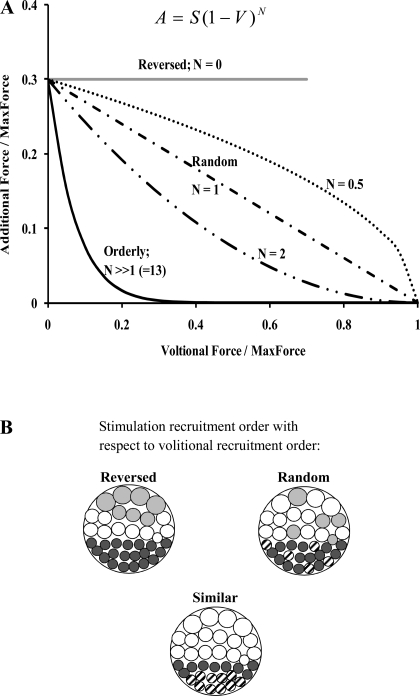Fig. 6.
Schematic representation of the effect of various values of parameter N from Eq. 1 (A) on the additional force produced by the electrical stimulation onto the volitional contraction. The additional force, A, the stimulation force, S, and the volitional force, V, are normalized with respect to the MaxForce. The beach ball pattern shown in B represents the interaction of the activation in response to stimulation and volitional contraction. The volitional activation always follows the size principle and recruits progressively from small to large motor units, and volitionally activated motor units in A are represented by solid circles. For a reversed recruitment order of motor units by electrical stimulation with respect to volitional contractions, the motor units are recruited from large to small units and are shown as shaded circles. For a random recruitment order of motor units by electrical stimulation, the motor units shown as hatched circles represent those motor units already activated by volitional contraction and cannot be activated by electrical stimulation. For the case where the recruitment order of motor units by electrical stimulation is similar the volitional recruitment order, if the force produced by electrical stimulation is less than the volitional contraction, then no additional force is produced. Under these conditions, in the beach ball labeled “similar,” all the motor units recruited by electrical stimulation are shown as hatched circles.

